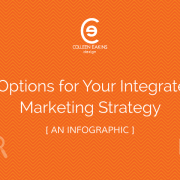What You Need to Know About Voice Search and SEO
As technology and the way that people use it changes, marketing companies and small businesses must stay abreast of how they can adjust their strategies to remain competitive.
In 2018, one of the most significant shifts in the way people query for information is the broader adoption of voice search. Mobile devices and the introduction of voice assistant devices such as the Amazon Echo, Google Home, and Apple HomePod, can now perform searches just by asking a question. A helpful Alexa or Siri is always happy to respond with no keyboard required!
As you can imagine, this change in the way people search for information and data online has surprising and far-reaching implications as it relates to search engine optimization.
Facts About Voice Search
In 2015, 65% of smartphone users in the United States used a voice assistant. In 2013, only 30% reported using this feature on their phone.
In 2016, Google disclosed that 20% of searches originated from voice-based queries.
In 2017, 33 million voice-assistant devices were reportedly in use.
There’s little doubt that voice search is here to stay, so the big question is how this displacement of search queries affect search engine optimization.
How Voice Search Changes Search Engine Optimization (SEO)
Without users having to type keywords or search phrases into a search bar, it’s easy to see how everything changes for search engine optimizers. Here are a few factors to account for when optimizing for voice search queries.
People Ask Full Questions Instead of Using Keyword Strings
One of the most significant differences when people use a voice assistant, versus performing a keyword search at their favorite search engine, is the way the query is phrased. When using a voice assistant, people are more likely to ask a direct question using everyday language and not a string of keyword phrases.
Whereas, when using a search engine, the query would include relevant keyword phrases.
For example, let’s say you want to find pizza delivery in your neighborhood. If you’re using your desktop computer, you might enter the query “pizza delivery” plus your zip code number and the search engine returns the best possible matches that offer pizza delivery services.
When asking a voice assistant, the chances are good that your question would be something like ‘which pizza place delivers to my house?’ To which the voice assistance would find possible matches for Italian restaurants and pizza joints that offer delivery services in the area.
Over the years of development, virtual assistants have come to understand complex queries and answer satisfactorily. For people who prefer to work handsfree, it’s a more convenient way to get answers to the questions they have.
Contextual and Local Search Matters
When conducting a desktop-based search, it wasn’t uncommon for these queries to be without a lot of added context. The submitted keyword or keyword string was the only qualifier. Recent changes to major search engine algorithms have emphasized the meaning in which search terms are used when assigning ranking positions. Today, the best search engine results help answer the question of the searcher, based on the intent of their search query and serving matched results.
There is little doubt that contextual, local, and voice search should work together to connect with existing and potential new clients, regardless of the type of Internet-connected device they are using. By putting all of the pieces together in the right way, business owners and marketers can succeed in attaining their business objectives.
Catering to A Mobile Market
In 2013, nearly half of all searches conducted from a mobile device had local intent. When local purchasing intent and purpose is combined with voice assistant queries, the combination can be a powerful driver of foot traffic for businesses.
Think about it. Nearly everyone carries a smartphone with them at all times. No longer do people have to drive around hopelessly lost or unsure of where to find the next gas station. All they need to do is use their phone and/or its voice assist to get helpful directions to the nearest gas station or a major highway.
Target Long-Tail Keywords
Simple keyword strings are being replaced with phrase-based queries often worded as simple questions, which are longer and more precisely formulated. Industry insiders refer to these query strings as ‘long tail keywords.’ They are the foundation for almost all SEO-related activity.
As users transition to using voice search for simple queries, the importance of long tail keywords is critical, as questions are asked in a more conversational tone. By understanding what your core keyword focus is, along with your local market, you can begin formulating a plan to be more relevant with voice assistant searches.
By fashioning relevant long tail keyword phrases into your content, in addition to providing helpful, user-friendly material, you are optimizing your website content for greater success. Ideally, the site should be friendly for visitors on browsers of all sizes, as well as compatible with search engine spiders and web crawlers that are responsible for indexing and ranking these pages.

I’m a Digital Marketer & Freelance Writer with a penchant for all things forward-thinking and positive. I’m a fan of abundance and progress.


 ©2018, Colleen Eakins Design
©2018, Colleen Eakins Design ©2018, Colleen Eakins Design
©2018, Colleen Eakins Design ©2018, Colleen Eakins Design
©2018, Colleen Eakins Design ©2018, Colleen Eakins Design
©2018, Colleen Eakins Design ©2018, Colleen Eakins Design
©2018, Colleen Eakins Design